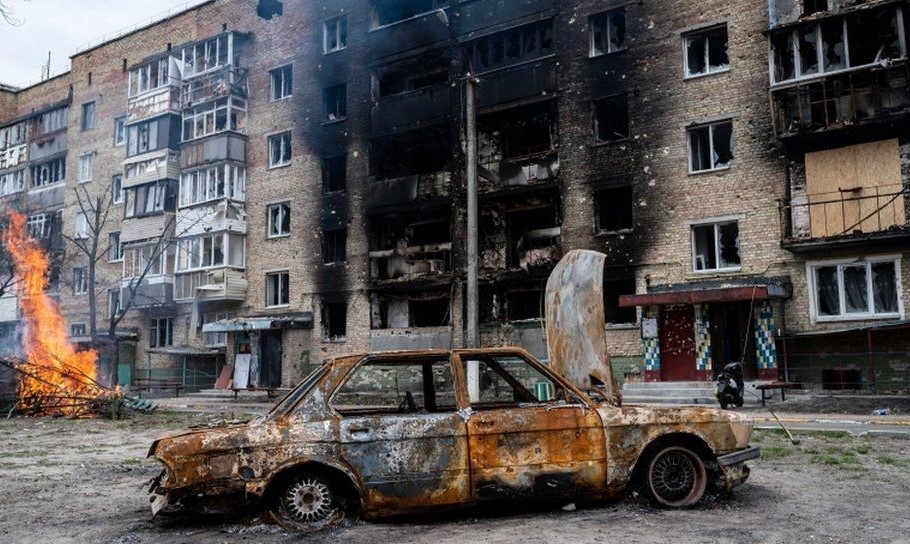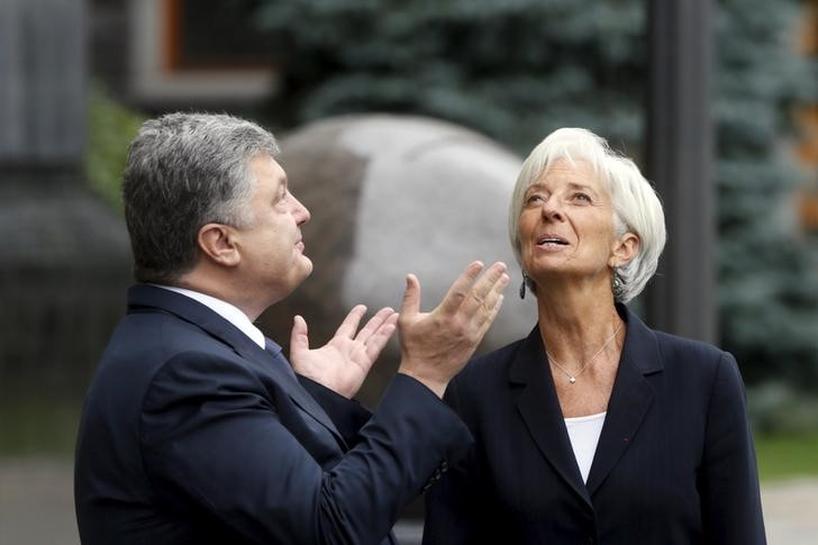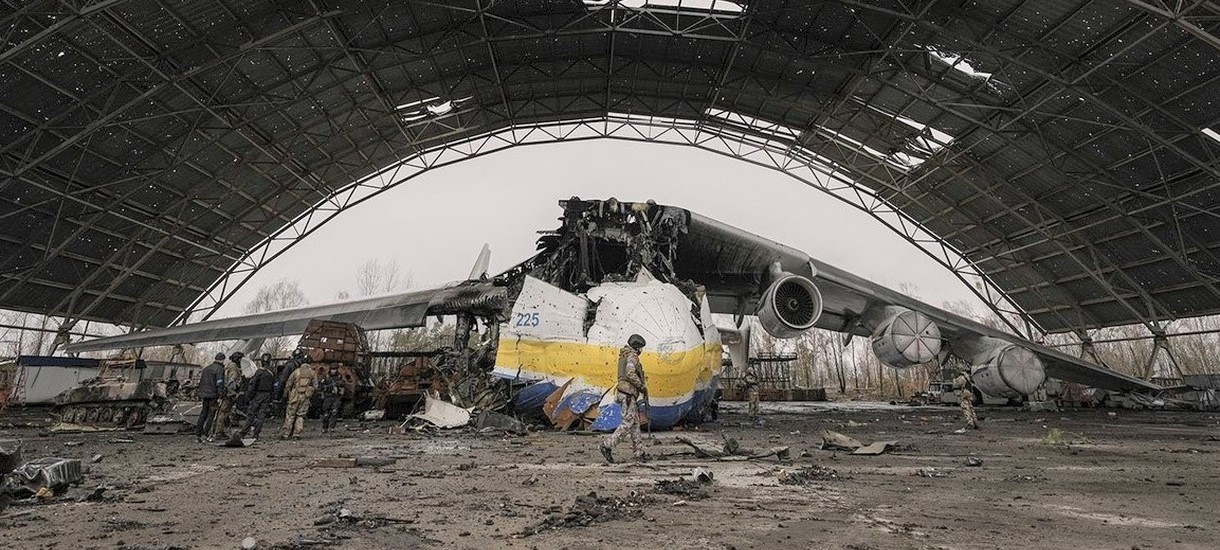On April 10 the World Bank updated its GDP prognosis for Ukraine to state that the Russian invasion was to shrink Ukraine’s economy by 45% in 2022 alone.[1] But that is a very optimistic prognosis. As by March 29th, the country’s direct one-time losses due to the invasion already exceed $1 trillion. Even prior to the invasions Ukraine already was one of the poorest and most indebted countries in Europe. Current budgetary expenditure on arms, humanitarian needs, and medical needs of the wounded have grown exponentially. That is why the IMF has already set up a fund to allow other countries steer more resources to Ukraine's accounts following talks with Ukraine’s Ministry of Finance.
Astronomical amounts of funds will also be needed after the war to reconstruct housing and infrastructure, clean up and decontaminate cities, villages, land, forest and water resources. In such conditions, servicing the state debt is possible only if the military and other most urgent needs of the people are neglected – otherwise, the finance available is simply not enough, even with donations from other countries and organizations. Satisfaction of urgent needs – not interest on loans – should be a priority.

Destroyed house and the car of civilians after the Russian attack / Reuters
At the same time, post-war economic reconstruction should be carefully planned. This can only mean one thing – it is time for large-scale multifaceted international assistance and easing the conditionality of IMF assistance to allow for fiscal activism at home, and not wartime austerity so that debts can be serviced. This can be achieved only through coordinated actions by Ukraine, international organizations, foreign politicians and various socially active groups.
In this article, I will present the main aspects of the history of the formation of Ukrainian debt, its toxicity during the war, and the general conditions for the effectiveness of the macroeconomic reconstruction program, in particular the role of the institution of the state in such a process.
A brief history of debt
After independence, Ukraine lost the real economic base necessary to support the economy, and repay public or private debts. Added to this was the pressure on the economy due to the constant need for borrowed capital (state, commercial and consumer), complicated by the limited ability to repay interest. The economy has further weakened the combination of dependence on imports, dollarisation and devaluation of the national currency, which continue to this day. Oleksandr Kravchuk (2015) documents in detail how this debt was formed and the prerequisites for its accumulation in Ukraine.
The picture deteriorated due to the multi-level shock of the COVID-19 pandemic, and now a new stage of the Russian invasion. The government tried to compensate for the negative economic consequences of the pandemic through further market reforms. EU macro-financial assistance has supported the country in the fight against the consequences of the COVID-19 pandemic and a form of such can help today. Assistance from the IMF is very important, partly because it is the IMF that develops instructions for the disposal of debts and assistance. But for Ukraine, the last tranches of microfinance assistance from the IMF come with "larger and more comprehensive [requirements] and relate to strengthening the management of public finances, governance and rule of law, reforming the judiciary, competition in the gas market, improving the business climate and managing state-owned enterprises." That means higher utility prices, government spending austerity policies and the commercialization of state-owned enterprises. Such steps require immediate revision in order to create space for autonomous leadership of the economy.
International lenders and debt-managing institutions – the IMF, the World Bank and the European Central Bank – can help this situation, but the current model of engagement needs to be adjusted. In addition, almost all conventional crisis financing tools have already been exhausted. For example, Ukraine has already received $ 1.4 billion through the Rapid Financing Mechanism (RFI), which "must be repaid within 3-5 years". The loan conditions state that the borrower "is obliged to cooperate with the IMF to make efforts to resolve the difficulties of the balance of payments and describe the general economic policy that the borrower proposes to adhere to". It is obvious that in 3-5 years Ukraine will not be able to pay such amounts. And that other solutions for financial needs must be sought.
 Fifth President of Ukraine Petro Poroshenko during a meeting with Managing Director of the International Monetary Fund Christine Lagarde
Fifth President of Ukraine Petro Poroshenko during a meeting with Managing Director of the International Monetary Fund Christine Lagarde
A country at war is unable to meet the conditions on pre-existing debts, let alone new ones. Such measures are unsuitable for the purposes to which they are directed, even if the "conflict" is indicated as one of the situations when RFI is used. This is morally and economically impractical, not least because of fiscal austerity and market approaches to non-market problems expected of the above-mentioned economic policy – its basic economics.
The role of the state and the IFIs in economic reconstruction
Ineffective approaches to leading the economy during the COVID-19 pandemic have taught many world politicians and economists to welcome the role of the state in the economy, because markets could not cope with the crisis on their own – a familiar and common market failure in action. The state in Ukraine, unlike its stereotypical perception, is not bloated, but on the contrary – "the share of national income distributed through taxation and budgetary allocation in Ukraine is much smaller than in advanced economies of the EU”. It was the state that was a key agent in rebuilding much of Europe, Japan and South Korea after World War II. Based on that historical experience, the "development state" was elaborated as a concept, and now is the time to return to it and dispel the myth of unbridled markets that lift countries from their knees.
According to the European Green Deal and the New Green Deal in the United States, the state becomes a leading investor force to instil trust and “tame” the Keynesian "animal spirits" of investors, and stabilize the economy. The IMF and other international creditors of last resort are needed as sources of financing. But it is state institutions that carry out the development programmes in their countries and they should have autonomy in such a process. Local enterprises should be given the highest priority in access to public investment. This sovereignty of implementing economic decision-making policies should be reinterpreted and reassessed as part of the cooperation between Ukraine and its creditors.
However, the Letter of Intent and the updated Memorandum of Economic and Financial Policy on the current stand-by agreement for Ukraine, published in 2021, repeat the old principles of obtaining financing. The Memorandum outlines "measures to implement structural reforms", namely "reforms in the monetary, fiscal and financial sectors aimed at improving the business climate and strengthening the rule of law, as well as combating corruption". The problem is that such reforms are aimed at anything but tackling further inequality, socio-economic vulnerability and the need for even more debt to stabilise the balance of payments at the expense of more pressing needs.
A view expressing ineffectiveness of austerity and the over-controlled frameworks of prescriptive policies for loan recipient states has existed in the IFIs for a number of years by now. Christine Lagarde, now president of the European Central Bank, shared this vision while still head of the IMF. It is time to put such a vision into practice, in particular, in helping Ukraine. We will need a lot of help, from direct and immediate to long-term, and for that conventional lending, mechanisms will not be enough. Simplifying the conditions for obtaining loans, large-scale macroeconomic assistance and full debt cancellation would allow Ukraine to get much-needed room for maneuver and use available assistance in the most effective way.
GDP tales, economic depreciation, and (ac)counting losses
Any attempt at understanding the weaknesses of Ukraine’s economy should start with carefully thinking of the frame of analysis chosen, and whether it fits the purpose. All in all, there is a strong need to move away from a “transition” narrative in policy design, making, and analysis to a more nuanced understanding of the compound effects of public services reforms, their nature and variegated, geographically and economically uneven, and gendered effects in the studied countries. We have seen not the lack of public services and infrastructure but rather its dilapidation, defunding, and sell-off and thus talking of economic de-development with all effective socio-economic costs i.e. (feminisation of) poverty, anomie, unemployment, sporadic turns to subsistence agriculture, brain drain, labour migration and variegated remittances reliance, extremes of riches for selected few and poverty for the many, etc.
A teenager in the background of the ruins of his house in Chernihiv with a stray cat picked up on the street / AP
So far Ukraine adheres to its debt obligations in rhetoric and in practice, the statements of the relevant officials, for example, Finance Minister Serhii Marchenko and Commissioner for Public Debt Management Yuriy Butsa reject considerations for debt restructuring. On March 1, a half-year coupon payment of $292 million on Eurobonds was made and military bonds were issued. The latter is planned to cover salaries and pensions, says Butsa. But bonds, again, are debt. What the country needs are debts written-off, not a pile-up.
It is clear that Ukraine wants to seem like a reliable partner, strong and steadfast under the enormous pressure of war. But in conditions of unequal war, such behavior is madness. Moreover, loans and bonds will not cover all the needs and funds necessary to counter Russian aggression, address the humanitarian crisis, infrastructure disruption and ruination, and the chaos with human resources arising from the mass displacement of people. All this is an exorbitant burden even without extra debts.
In the end, it all boils down to one question: who and what is the priority of our Ministry of Finance, government and organizations that should stabilize the economy – Ukrainians survival or a handful of private investors and their annual multibillion-dollar enrichment even in times of war?



